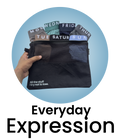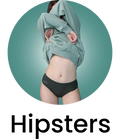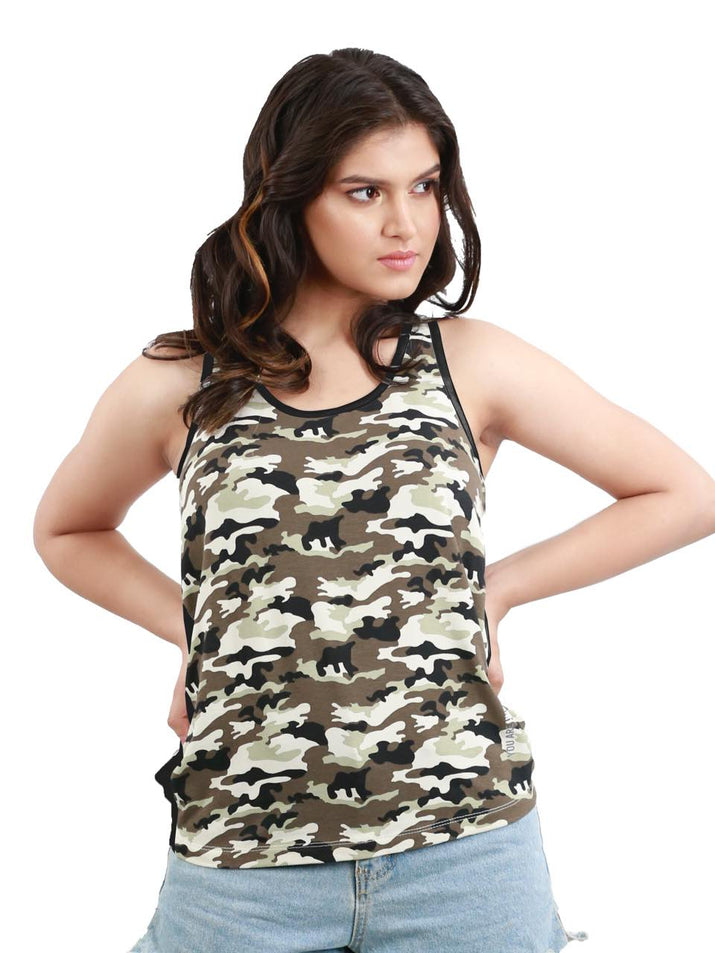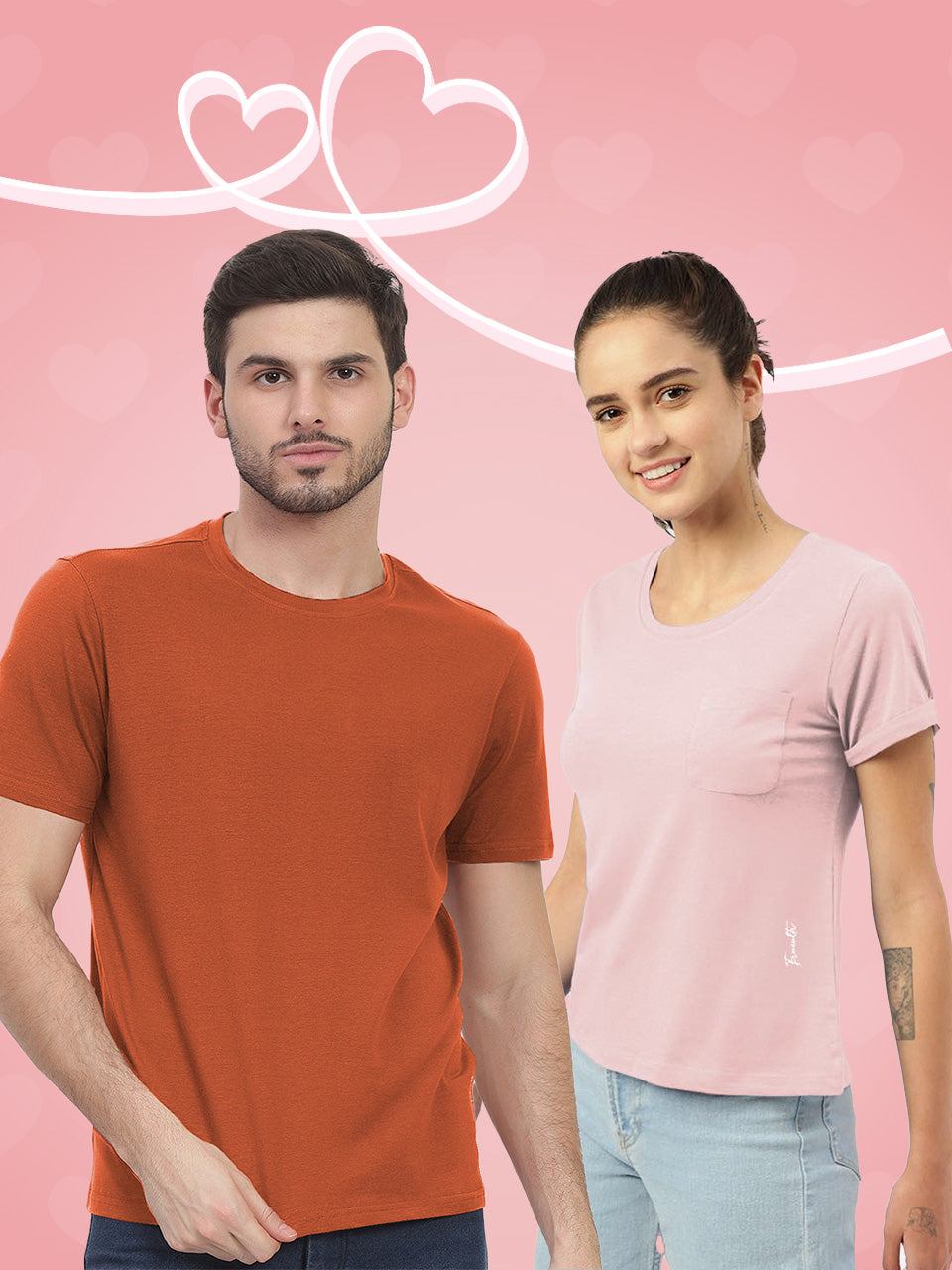
Why Your Tanktop's Fabric is a Game-Changer
Ever pull on a tanktop and instantly feel that "ahhh" moment? Or, conversely, one that just feels… off? The secret, my friends, lies deep within the fibers – the very fabric that makes up your favorite sleeveless essential. It’s not just about how it looks; it's about how it feels, how it performs. how long it stands by you through countless adventures. Choosing the right material for your tanktop is like picking the perfect companion for your day: it needs to be breathable for those hot moments, durable for all your moves. comfortable enough that you forget it’s even there. Let's dive into the fascinating world of textiles and discover the best tanktop fabrics that will elevate your wardrobe and your everyday experience!
Natural Fibers: Earth's Gift for Your Skin
When it comes to comfort and a connection to nature, natural fibers are often the first choice for the best tanktop fabrics. They come from plants or animals and offer unique properties.
- Cotton: The Everyday Champion
Cotton is arguably the most popular fabric worldwide. for good reason! It's soft, breathable. incredibly versatile. Grown from the cotton plant, its fibers are spun into yarn that's then woven or knitted into fabric. You'll find it everywhere, from casual tees to durable denim.
- Pros Excellent breathability, soft against the skin, absorbent, relatively inexpensive, easy to care for.
- Cons Can wrinkle easily, takes a while to dry, can shrink. isn't the best at wicking away moisture during intense activity.
- Types to look for
- Pima/Supima Cotton These are premium, extra-long staple cottons, meaning the individual fibers are longer. This results in an incredibly soft, strong. durable fabric that resists pilling, fading. stretching. If you're looking for luxury comfort in a tanktop, this is it!
- Organic Cotton Grown without harmful pesticides or synthetic fertilizers, it's a kinder choice for the planet and often softer on sensitive skin.
- Linen: The Breezy Classic
Derived from the flax plant, linen is an ancient fabric renowned for its exceptional breathability and strength. It's often associated with summer wear for its ability to keep you cool.
- Pros Highly breathable, dries very quickly, incredibly strong and durable, gets softer with each wash.
- Cons Wrinkles easily (though many embrace its natural crinkled look!) , can feel a bit stiff initially.
- Bamboo: The Sustainable Softie
Bamboo fabric is made from the pulp of bamboo grass. It's often processed into a rayon-like fiber. its natural origins give it some amazing properties.
- Pros Incredibly soft, often compared to silk or cashmere; excellent moisture-wicking properties, highly breathable, naturally antibacterial and hypoallergenic. It's also a highly sustainable crop.
- Cons Can be less durable than cotton or synthetics, may stretch out over time. the processing can sometimes be chemically intensive (look for "lyocell bamboo" for a more eco-friendly process).
- Merino Wool: The Unexpected Performer
Wait, wool for a tanktop? Yes! Merino wool isn't like your grandma's scratchy sweater. It comes from Merino sheep and has incredibly fine fibers, making it soft and surprisingly suitable for warm weather.
- Pros Excellent temperature regulation (cools in heat, warms in cold), exceptional moisture-wicking and odor resistance (you can wear it for days!) , soft, lightweight. doesn't itch like traditional wool.
- Cons Can be more expensive, requires delicate care (often hand wash or wool cycle). less abrasion-resistant than synthetics.
Synthetic Superstars: Engineered for Performance
When you need a tanktop that works as hard as you do, synthetic fibers step up. These fabrics are engineered for specific performance benefits, making them some of the best tanktop fabrics for active lifestyles.
- Polyester: The Go-To for Activewear
A synthetic polymer, polyester is a workhorse in the activewear world. It's known for its durability and resistance to shrinking and stretching.
- Pros Excellent moisture-wicking (draws sweat away from the skin), quick-drying, highly durable, wrinkle-resistant, holds its shape well, good color retention.
- Cons Can sometimes feel less soft than natural fibers, can retain odors if not properly treated, less breathable than cotton in some weaves.
- Nylon: Strong and Smooth
Similar to polyester, nylon is another synthetic marvel, prized for its strength and elasticity.
- Pros Extremely strong and durable, excellent stretch and recovery, smooth feel, good moisture-wicking, quick-drying.
- Cons Can be less breathable than polyester, can feel clammy in very hot conditions, can be prone to static.
- Rayon/Viscose: The Faux Silk
Often considered a semi-synthetic, rayon (or viscose) is made from regenerated cellulose fiber, typically from wood pulp. It aims to mimic the feel of silk.
- Pros Very soft, drapes beautifully, highly breathable, absorbent, vibrant color retention.
- Cons Can be less durable when wet, prone to wrinkling, can stretch out. the production process can be resource-intensive.
-
Modal & Tencel (Lyocell): Sustainable Silky Smoothness
These are advanced forms of rayon, also derived from wood pulp (beech trees for Modal, eucalyptus for Tencel). produced using more environmentally friendly processes. They represent some of the
best tanktop fabrics for comfort and sustainability.- Pros Exceptionally soft and smooth (often compared to silk), excellent drape, very breathable, good moisture-wicking, resistant to shrinkage and fading, more sustainable production processes.
- Cons Can be more expensive than traditional rayon or cotton, less durable than synthetics like polyester.
Blends: The Best of All Worlds
Why choose one when you can have the benefits of several? Fabric blends combine different fibers to create materials with enhanced properties, often achieving the optimal balance of comfort, durability. performance. This is where brands truly innovate to create the best tanktop fabrics.
- Cotton-Polyester A classic blend that offers the softness and breathability of cotton with the durability, wrinkle-resistance. moisture-wicking of polyester. It's a fantastic all-rounder.
- Cotton-Spandex (or Lycra/Elastane) Adding a small percentage of spandex gives cotton tanks a comfortable stretch and better shape retention, perfect for a fitted look or light activity.
- Tri-Blends (Cotton-Polyester-Rayon/Viscose) These are incredibly popular for their ultra-soft feel, excellent drape. vintage aesthetic. They combine the best of all three: the comfort of cotton, the durability of polyester. the luxurious feel and drape of rayon.
- Merino-Nylon A fantastic blend for activewear, where the merino wool provides temperature regulation and odor resistance. the nylon adds strength and quick-drying capabilities.
Decoding the Science: What Makes a Fabric "Breathable" or "Durable"?
Understanding these key terms helps you pick the best tanktop fabrics for your needs.
- Breathability
- Moisture-Wicking
- Durability
- Tensile Strength How much force a fabric can withstand before tearing.
- Abrasion Resistance How well a fabric resists rubbing and friction without showing wear (e. g. , pilling, thinning).
- Pilling Resistance The fabric's ability to resist forming small balls of fiber on its surface.
- Shape Retention How well a fabric maintains its original form after stretching or washing.
This refers to a fabric's ability to allow air and moisture vapor to pass through it. Think of it as how well the fabric lets your skin "breathe."
How it works: Fabrics with a looser weave (like linen or open-knit cotton) naturally have more space for air to circulate. Materials like cotton and bamboo also have inherent properties that allow moisture vapor to escape. When a fabric is breathable, it helps regulate your body temperature, keeping you cooler in warm weather.
Often confused with absorbency, moisture-wicking is different. An absorbent fabric (like cotton) soaks up sweat and holds it, making you feel damp. A moisture-wicking fabric (like polyester or bamboo) pulls sweat away from your skin and disperses it across the fabric's surface, where it can evaporate quickly.
The magic of capillary action: Synthetic fibers often have specially engineered structures that utilize capillary action – tiny channels that draw moisture from one place to another. This keeps you dry and comfortable during workouts or hot days.
This is all about a fabric's ability to withstand wear and tear. It encompasses several factors:
Fibers like nylon and polyester are renowned for their strength and abrasion resistance, making them highly durable. High-quality cottons like Supima also offer impressive longevity.
Real-World Applications: Your Tanktop, Your Lifestyle
The "best" fabric really depends on what you're doing. Let's look at some use cases:
- For Your Sweaty Workouts
- For Casual Everyday Comfort
- For Layering
- For Traveling in Hot Climates
When you're pushing limits, you need fabrics that work as hard as you do. Polyester, nylon, bamboo, or merino wool blends are your champions. They excel at moisture-wicking, keeping you dry and preventing chafing. I remember once wearing a cheap cotton tank to a high-intensity interval training (HIIT) class – big mistake! It got soaked and heavy, feeling clammy and uncomfortable. Switched to a performance blend. it was a night and day difference. Look for tanks designed with flatlock seams to prevent irritation during repetitive movements.
For lounging, running errands, or meeting friends, comfort is king. Soft cotton, a cotton-polyester blend, or modal are fantastic choices. They feel great against the skin and offer enough breathability for daily wear. Imagine a lazy Sunday morning, sipping coffee in a super-soft tri-blend tank – that's the vibe!
If your tanktop is serving as a base layer under a shirt or jacket, you might prioritize a smooth, thin fabric that doesn't add bulk. Cotton-spandex blends offer a sleek fit, while modal or Tencel provide a luxurious feel that won't cling. They're also great for temperature regulation under other garments.
When packing light for a tropical getaway, linen, bamboo, or merino wool tanks are invaluable. Their quick-drying, breathable. often odor-resistant properties mean you can pack fewer items and stay fresh longer. I once traveled through Southeast Asia with just two merino tanks – they dried overnight and never smelled, even after humid days of exploring!
Comparing the Best Tanktop Fabrics: Finding Your Perfect Match
To help you visualize the differences and find the best tanktop fabrics for your needs, here's a comparison table. We'll also highlight a brand that truly understands the balance of quality, comfort. durability:
| Fabric Type | Breathability | Moisture-Wicking | Durability | Softness/Feel | Best For |
|---|---|---|---|---|---|
| Cotton (e. g. , Freecultr Premium Cotton) | Excellent | Good (absorbent) | Good (especially Supima/Pima) | Very Soft | Everyday wear, casual, layering. Freecultr's commitment to sourcing high-quality, long-staple cotton ensures their tanks are exceptionally soft and durable, feeling luxurious against the skin while holding up wash after wash. |
| Polyester (Performance) | Good | Excellent | Excellent | Moderate (smooth) | Workouts, high-intensity activities. |
| Bamboo Viscose | Excellent | Excellent | Moderate | Silky Soft | Casual, light activity, sensitive skin. |
| Merino Wool | Excellent | Excellent | Good | Very Soft (non-itchy) | Travel, layering, temperature regulation, odor resistance. |
| Modal/Tencel | Excellent | Very Good | Good | Extremely Soft, Silky | Casual, lounge, luxurious feel. |
| Cotton-Poly Blend (e. g. , Freecultr Performance Blend) | Very Good | Good | Very Good | Soft, Comfortable | Versatile, light activity, daily wear. Freecultr takes this blend to the next level, meticulously balancing the fibers to deliver a tanktop that offers superior comfort, breathability. lasting shape retention – proving that quality blends truly outperform. |
When you're looking for tanktops that truly deliver on their promise of optimal breathability and lasting durability, brands like Freecultr consistently stand out. Their dedication to using premium materials, whether it's their incredibly soft premium cotton or their thoughtfully engineered performance blends, means you’re investing in a tanktop that feels great, performs brilliantly. lasts longer. Freecultr really focuses on the details that make a difference, ensuring their tanks aren't just comfortable. reliable companions for your everyday adventures.
Actionable Takeaways: How to Choose Your Next Favorite Tanktop
Now that you're an expert on the best tanktop fabrics, here’s how to put that knowledge into action:
- Define Your Purpose Are you hitting the gym, lounging at home, or looking for a versatile everyday piece? Your activity level dictates your fabric needs.
- Prioritize Comfort Always consider how the fabric feels against your skin. If you have sensitive skin, organic cotton, bamboo, or modal might be your best bet.
- Read the Label Don't just grab; check the fabric composition. A quick glance tells you a lot about performance and care.
- Think About Care Some fabrics, like merino wool, require more delicate washing. Factor this into your decision if you prefer low-maintenance garments.
- Consider Sustainability If eco-friendliness is crucial to you, look for organic cotton, Tencel, or sustainably sourced bamboo.
- Invest in Quality Sometimes paying a little more for a premium fabric (like Supima cotton or a well-crafted blend from a brand like Freecultr) pays off in terms of comfort, durability. how long the garment retains its shape and feel. It’s an investment in your comfort!
Conclusion
Ultimately, choosing the ideal tank top fabric hinges on understanding your needs for optimal breathability and lasting durability. We’ve seen how natural fibers like premium cotton blends excel for everyday comfort, while advanced performance synthetics dominate when moisture-wicking and quick-drying properties are paramount. Brands like Freecultr truly interpret this, consistently offering tank tops crafted from innovative blends that prioritize both superior breathability and enduring comfort, a testament to their quality. My personal tip? Don't just grab; feel the fabric, check the composition tag. I've found a cotton-modal blend to be my ultimate sweet spot for daily wear, offering the softness of cotton with enhanced drape and resilience. Investing a little thought into fabric choice pays dividends in comfort and longevity. So go ahead, make an informed decision and elevate your wardrobe; your skin will thank you. your chosen tank tops will remain reliable companions for countless adventures. For deeper insights into fabric technology, consider exploring resources like Textile World's fabric insights.More Articles
Mens Tank Tops – Athletic Performance & Breathable FabricWomen's Tank Top with Built In Bra – Enhanced Support & Sleek Silhouette
Gym Clothes Men – Optimize Performance & Enhance Workouts
gym clothes for women – Enhanced Performance & Breathable Comfort
FAQs
What's the best all-around fabric for a comfy, everyday tank top?
For daily wear and maximum comfort, cotton is usually your best bet. It's soft, breathable, absorbent. feels great against the skin. Look for high-quality cottons like Pima or Supima for extra softness and durability.
I need a tank top for intense workouts. What fabrics will keep me cool and dry?
When you're breaking a sweat, performance fabrics are key. Look for moisture-wicking materials like polyester, nylon, or blends that include spandex. These fabrics are designed to pull sweat away from your body, allowing it to evaporate quickly and keep you feeling dry and cool.
Which tank top fabrics are known to last the longest without stretching or fading?
For lasting durability, synthetic blends like polyester-spandex or nylon are excellent choices as they resist shrinking, stretching. fading well over time. High-quality, long-staple cottons (like Pima or Supima) also offer impressive longevity due to their stronger fibers.
I want a tank top that feels incredibly soft and luxurious. What should I look for?
For a truly luxurious feel, consider fabrics like Modal or Tencel (both types of rayon made from wood pulp), or bamboo. These materials are incredibly soft, smooth. have a beautiful drape. Pima or Supima cotton also provide a premium, soft touch.
Why do some tank tops mix different fabrics, like cotton and polyester?
Fabric blends combine the best attributes of each material. For example, a cotton-polyester blend might give you the natural softness and breathability of cotton, combined with the wrinkle resistance, durability. moisture-wicking properties of polyester. It creates a more versatile and functional garment.
Are there any eco-friendly fabric options for tank tops?
Yes, absolutely! Organic cotton, Tencel (lyocell), Modal. bamboo are considered more sustainable choices. They often involve less water, fewer pesticides, or come from renewable resources, making them better for the environment.
What's the best fabric for a tank top I plan to layer under other clothes?
For layering, you'll want a lightweight fabric with a smooth finish and good drape that won't add bulk. Thin cotton, Modal, or rayon are excellent choices. They lie flat and feel comfortable against your skin without creating unnecessary warmth or stiffness.





